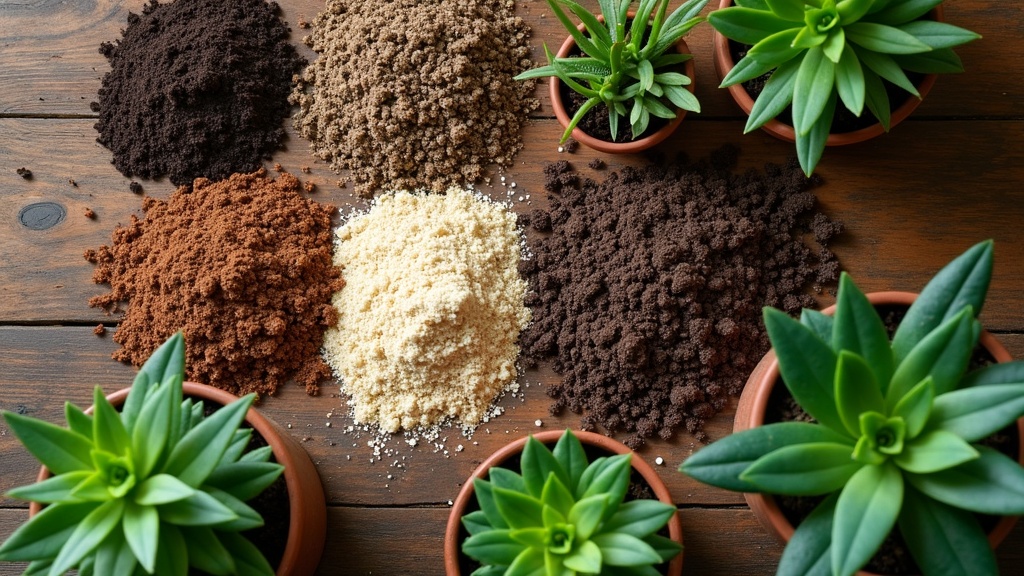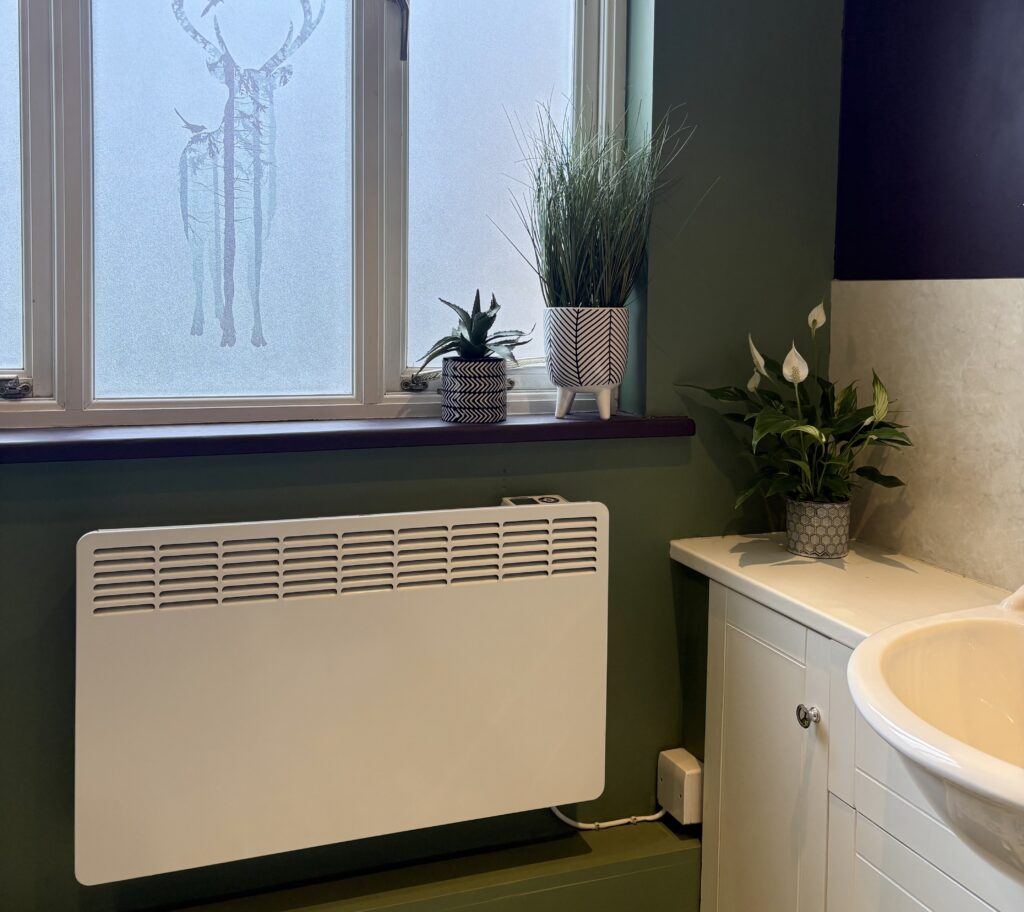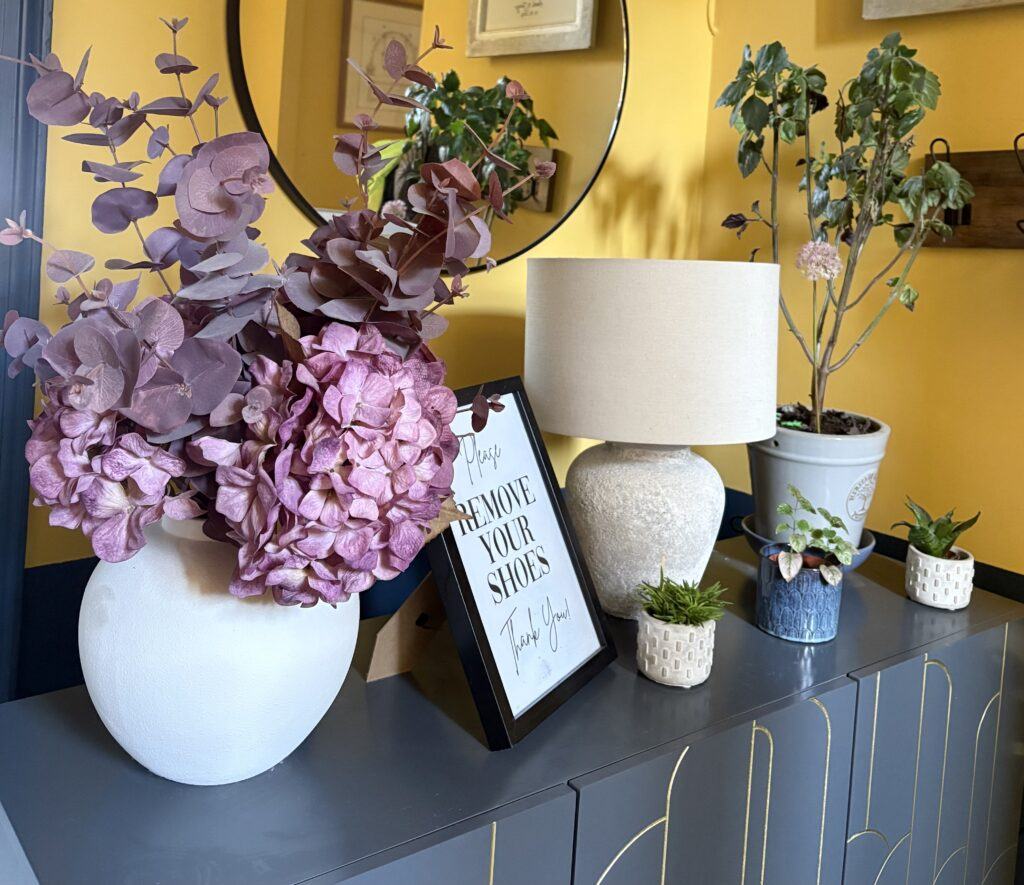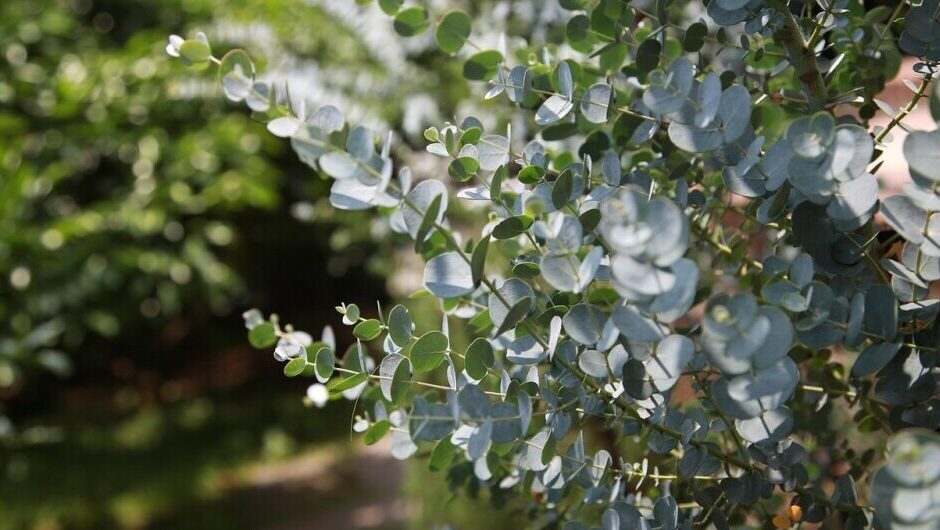Best Soil for Indoor Plants UK | Potting Mix & Repotting Guide
Discover the best soil for indoor plants in the UK. Learn potting mix ingredients, repotting tips, and plant-specific blends to keep houseplants thriving.
Getting your indoor plants off to a good start depends a lot on what’s happening below the surface. That “houseplant compost” or “potting soil” on shop shelves isn’t always what you might expect. Picking the right mix for your plant makes things easier, keeps your houseplants healthy, and saves you money in the long term. I’m sharing my hands-on experience, practical tips, and answers to some of the most common questions people have about indoor plant soil.
Author Bio: Growing a Love for Indoor Plants
My passion for gardening doesn’t stop at the back door—it also extends indoors. About ten years ago, my husband gave me a stunning orchid for our anniversary, and that single gift sparked a whole new interest: indoor plants.
I quickly became fascinated with the idea of bringing greenery and nature indoors, and I began researching everything I could about indoor plant care tips and how to create the right conditions for houseplants to thrive. Once again, the Royal Horticultural Society became an invaluable source of guidance, teaching me how to care for a wide variety of houseplants.
What started as a single orchid soon grew into a collection. Along the way, I learned everything from how to grow orchids at home to choosing the best low-maintenance houseplants for busy lifestyles. I soon realised I wasn’t alone—many people share the same desire to create lush, green indoor spaces.
This inspired me to share my houseplant advice so others can enjoy the benefits of indoor plants too. Whether you’re a beginner looking for simple tips or someone hoping to expand your collection, my goal is to help you build confidence and create a home filled with greenery.
Garden Nest Living grew from a simple idea: to share my love of gardens and creating calm, beautiful spaces, both inside and out. When you buy through my affiliate links, you are allowing me to keep sharing inspiration, ideas and products… at no extra cost to you. Thank you for being a part of my journey!

What’s Really in Houseplant Compost and Potting Mixes?
When you’re standing in the gardening aisle and looking at all those potting compost options, it’s not always clear what you’re really getting. Here’s what I wish I knew before I built up my plant collection:
Not All “Potting Soil” Is Actually Soil
- Most of the time, what’s labelled as “potting soil” is a soilless blend made of materials like peat moss, coco coir, perlite, vermiculite, and composted bark, not actual garden soil from the ground.
- True garden soil is much heavier, holds too much water, and compacts easily indoors. That’s a recipe for suffocated roots and struggling plants.
Why Drainage Is Essential for Indoor Plants
- Indoor pots don’t have nature’s drainage. Soil needs to be fluffy and quick-draining. Adding things like perlite, pumice, or coarse sand is a big help, especially for plants that dislike damp conditions.
- Pro tip: I always mix in a good handful of perlite when potting succulents or cacti to keep roots aerated.
Matching Soil Texture to Different Plant Types
- Each indoor plant is a little different:
– Succulents & cacti: Need a gritty, sandy mix that drains right away.
– Orchids: Love a bark-based medium with big air pockets.
– Tropical foliage (like monsteras, pothos, ferns): Prefer something that stays moist but never soggy. - Using the wrong texture either drowns the roots or dries out the plant too fast.
Essential Soil Additives for Healthy Indoor Plants
Perlite, Vermiculite, and Grit Explained
- Additives Change the Game:
– Perlite: Opens up air space and helps drainage.
– Vermiculite: Holds onto moisture and nutrients.
– Activated Charcoal: Helps with odours and removes toxins—especially important for terrariums or closed pots.
pH Balance and Why It Matters
- Most indoor plants do best in pH 6.0–7.0. Some sensitive varieties (such as azaleas or gardenias) like it a bit more acidic. If you keep picky plants, it’s smart to check the pH before planting.
Organic Matter and Soil Life Indoors
- Adding compost, worm castings, or leaf mould gives a nutrient boost and feeds helpful microbes. Indoor pots miss out on outdoor biodiversity, so you have to add the good stuff.
- Sterile or pasteurised mixes help you avoid bringing home fungus gnats, moulds, or sneaky diseases. Don’t use scooped-up soil from outside.
- If soil keeps too much water, roots get soggy. If it doesn’t hold enough, you’re always watering. Coco coir is great for keeping things damp a little longer and still drains well.
How Soil Breaks Down Over Time
- As the months pass, organic matter gets used up, and particles shrink. This means drainage suffers. Repot or refresh the soil every 1–2 years. (The RHS has a really useful Guide To Compost Mixes for Houseplants)
- If you tend to water a lot, stick to the fast-draining mixes. If you forget to water now and then, choose mixes that stay damp longer.
Different plants, different needs. Check care labels. Lots of houseplant-specific composts are sold in UK garden centres—look for mixes made for plants like cactus compost, fern mix, or a general houseplant soil.
Best Soil and Potting Mixes for Indoor Plants in the UK
When shopping in the UK, you’ll probably see bags labelled “houseplant compost” or special blends for succulents, cacti, orchids, aroids, and more. The good news is, most UK garden centres carry reliable options:
General-Purpose Houseplant Compost
- Good for most foliage and flowering plants. Usually contains peat or coco coir, plus sand or perlite for airiness. Great all-rounder.
Specialist Soils (Cactus, Succulent, Orchid, Aroid)
- It is worth using if you have several plants with the same needs. Succulent and cactus composts focus on drainage and extra sand. Orchid mixes are mostly bark.
Affordable Soil Boosters: Perlite, Charcoal, Grit
- Perlite: Easily mixes with compost or soil for better drainage and helps with cuttings or propagation.
- Horticultural grit: Mixes in for drainage, or sprinkle as a tidy top layer.
I’ve found general houseplant composts in the UK work well for monsteras, pothos, philodendrons, peace lilies, and many more. If you want extra drainage, mix in perlite or grit—especially if you have pots with no drainage holes (which I try to avoid).

Step-by-Step Guide: How to Repot Indoor Plants Without Stress
Repotting is more involved than just dumping in some new soil. You keep your indoor plants at their best by focusing on the little things:
Signs It’s Time to Repot
- Repot when plants are rootbound, soil is compacted, or if you spot white crust on the soil’s surface.
Best Season for Repotting
- Spring or early summer works best since plants are waking up and ready to go.
Preparing the Right Soil Mix
- Top dressing with grit, pebbles, or decorative stones tidies up the soil and keeps gnats away; it also helps reduce moisture loss.
- Nutrient boost won’t last forever; most soil will feed plants for about six weeks. After that, start feeding regularly (generally weekly in spring/summer, then less or none in winter)
Repotting Tips for Stress-Free Transplanting
- Don’t repot just by the calendar. I always check the roots—sometimes they’re happy in the same pot for another season.
When I refresh the soil, I look at what’s happening on top. If I see salt deposits or fungus gnats, that’s the sign to swap soil and clean up.
Common Indoor Plant Soil Problems and Easy Fixes
Soil That Dries Out Too Quickly
- Soil that dries out extremely fast probably needs more coco coir or compost to hold onto moisture. This is common in heated or dry homes.
Soggy Soil and Root Rot
- Soggy or mouldy soil means poor drainage. Add perlite, grit, or switch pots. Make sure every pot has at least one drainage hole.
Fungus Gnats and Pests in Soil
- Fungus gnats love wet, peaty soils. Let the top inch dry out before you water, and put down a layer of grit to keep pests away.
If a plant is struggling no matter what you do, check the roots while repotting. Brown, mushy roots mean you’ve watered too much or the soil is holding water. Roots that are completely dried up mean you might need to water a bit more, or the soil needs more compost or coco coir.
Orchid Repotting Mistakes to Avoid: Why Soil Choice Matters
When I first started filling my home with more greenery, I assumed that indoor plants were just like outdoor ones — same care, same soil, same everything. So, when my orchid outgrew its little pot, I did what I thought was best: I picked out a slightly bigger pot from the garden centre, gently eased the orchid out to protect its roots, and repotted it using some leftover compost mix from my garden.
At first, everything looked perfect. My orchid seemed happy, and I was quite proud of myself! But a few weeks later, I noticed the leaves starting to droop, and the plant looked far from thriving.
That’s when I learned an important lesson: orchids don’t do well in regular compost. They actually prefer a bark-based mix that allows their roots to breathe. Once I swapped the soil and repotted it properly, my orchid bounced back beautifully — and it’s still thriving today.
Now I always remind myself (and anyone new to houseplants): take the time to learn what each plant needs before repotting. A little research goes a long way toward keeping your plants happy and healthy!
Indoor Plant Soil: Frequently Asked Questions
Here are a few questions I often hear from new indoor plant lovers:
What soil is best for indoor plants in the UK?
A quality, peat-free houseplant compost works well for most indoor plants, with specialist blends available for orchids, succulents, and other unique needs.
Can I use garden soil for indoor plants?
No, garden soil is too heavy and holds excess water, which can suffocate roots; always use a light, sterile indoor potting mix.
How often should I replace indoor plant soil?
Refresh or replace indoor plant soil every 1–2 years, or sooner if it becomes compacted, salty, or infested with pests.
Do orchids need special soil?
Yes, orchids thrive in a bark-based medium with plenty of air spaces around the roots, not in regular compost.
What’s the best soil mix for succulents and cacti indoors?
A gritty, fast-draining mix of cactus compost, perlite, and coarse sand is ideal to prevent root rot and mimic their natural desert environment.
For any help or advice, it is always worth looking at the RHS website for ideas; they are a great resource and one I would highly recommend.
Quick Reference: Best Soil Mixes by Plant Type
| Plant Type | Ideal Soil Texture | Key Ingredients | Pro Tips |
|---|---|---|---|
| Succulents & Cacti | Gritty, very fast-draining | Cactus compost + coarse sand or grit + perlite | Avoid peat-heavy mixes; water only when soil is bone dry. |
| Orchids | Loose, airy, bark-based | Orchid bark + sphagnum moss + perlite | Keep roots exposed to light if in clear pots; avoid compacting. |
| Tropical Foliage (e.g., Monstera, Pothos, Philodendron) | Moisture-retentive but free-draining | General houseplant compost + coco coir + perlite | Keep evenly moist; don’t let sit in water. |
| Ferns | Light, moisture-holding, slightly acidic | Peat-free compost or coco coir + vermiculite | Mist regularly to maintain humidity. |
| Carnivorous Plants | Nutrient-poor, acidic, moisture-retentive | Peat-free acidic compost + perlite or sand | Use rainwater or distilled water only; never fertilise. |
| Aroids (e.g., Alocasia, Anthurium) | Chunky, well-draining, organic-rich | Aroid mix (compost + bark + perlite + charcoal) | Refresh mix every 1–2 years as organic matter breaks down. |
| Herbs Indoors | Light, well-draining, nutrient-rich | Multi-purpose compost + sand or grit | Keep in bright light; avoid overwatering. |
Ultimate Indoor Plant Soil Tips for Lush, Healthy Growth
- Different houseplants want different soils—always check plant care guides and research what your specific plant needs.
- General houseplant compost does the trick for most plants, but reach for a specialist blend for cacti, succulents, orchids, or terrarium plants.
- Perlite and horticultural grit really help drainage, especially in smaller pots or for plants sensitive to wet conditions.
- Watch the soil’s surface for pests or salt buildup—top dressing with grit or shells looks nice and helps control gnats.
- Feed plants on a routine after about six weeks, as the soil’s nutrients run low.
- Repot plants only when needed, and spring is usually the prime time for the job.
- Align your soil and watering routine—fast-draining mixes for frequent watering; moisture-holding blends if you miss sessions.
Paying close attention to soil might seem like a small detail, but in my experience, it’s the secret to keeping plants truly happy. That lesson started with a single orchid my husband gave me for our wedding anniversary—a gift that didn’t just brighten our home, but opened my eyes to the fascinating world of plant care. As my collection grew from that one orchid to a thriving indoor jungle, I learned that the right soil can make all the difference. Just a little tweaking—choosing the right mix for each plant’s needs—can transform leaves from limp to lush and corners from dull to vibrant. For me, soil isn’t just dirt in a pot—it’s the foundation of every green, living thing I nurture indoors.

Peace lily in our bathroom with two artificial plants for decoration.

Small indoor plants on our sideboard in our hallway with artificial stems in a vase for decoration.

I really enjoyed how this article went beyond the basics and highlighted the science and practicality of soil choice. It’s clear you’ve learned through hands-on experience. I especially appreciated the tips on matching soil textures to plant types, as that’s something many new plant parents overlook. I’ve personally found perlite to be a game-changer for keeping roots healthy in smaller pots. Do you think experimenting with DIY custom soil mixes offers better results than sticking to store-bought blends?
I’m so glad you enjoyed the article, and you’re absolutely right — soil is such an underrated part of plant success. Perlite is a fantastic addition, especially for potted plants that need consistent aeration. As for DIY custom mixes versus store-bought blends, I think it depends on your goals and your plants. Store-bought mixes are great for convenience and reliability, especially for beginners. But experimenting with custom blends lets you tailor drainage, moisture retention, and nutrients to exactly what your plants need — and that’s where you can see truly amazing results.
I never realized how much difference soil makes until a few of my plants kept struggling. Reading this really helps me understand why. The part about not using outdoor garden soil indoors makes a lot of sense now. I think I’ve been guilty of that in the past. I like how you explained the mixes for different plants in such simple words. I’m going to try adding perlite to my next repotting.
I’m so glad the article helped — soil really is the hidden secret to healthy plants, and it’s great that you’re noticing the difference it makes. Don’t worry, many of us have tried using garden soil indoors at some point — it’s a very common mistake! Adding perlite is a fantastic idea; it’ll give your plants lighter, airier soil and help prevent roots from sitting in too much water. Wishing you success with your next repotting!
Is soil, soil, or is dirt, dirt? So many people believe this is so, and while in some sense this may be right, different plant species require different soil to survive. Therefore, we must know what soil is the best fit for plants, which brings up the next point. Seeing that is the case, only plants that have the same soil requirements should be planted in the same bed for success.
I’ve been wanting to grow more plants indoors, and your post gave me a lot to think about. I usually buy ready-made potting soil, but the section on soil additives and repotting really caught my attention. We have different types of soil in our backyard, and I’ve been considering mixing my own instead of always relying on store-bought bags.
Do you think it’s worth experimenting with homemade mixes for indoor plants, or is it better to stick with commercial potting soil when you’re just starting out?
Thank you for your comment—I’m so glad the post gave you some inspiration for your indoor gardening! Ready-made potting soil is definitely the easiest and most reliable option when you’re starting out, since it’s usually well-balanced and free of pests or diseases.
That said, experimenting with homemade mixes can be very rewarding once you get more comfortable. Using materials like compost, perlite, or sand from your own back garden can help you customise soil to your plants’ needs—but it’s important to make sure the ingredients are clean and well-prepared to avoid introducing pests indoors.
So my advice would be: start with commercial mixes for consistency and ease, and then try blending small batches of your own as a fun experiment once you’re confident. That way you get the best of both worlds!